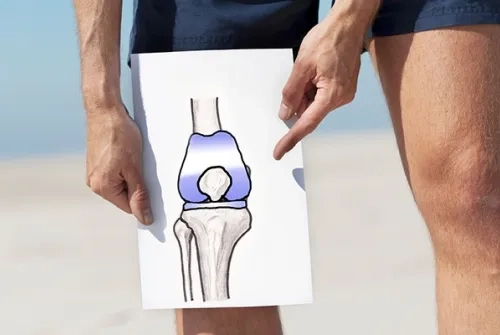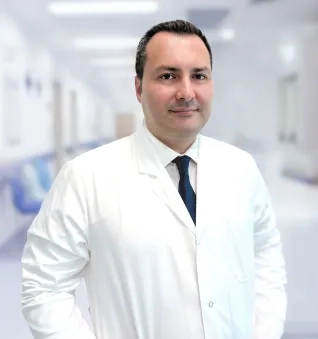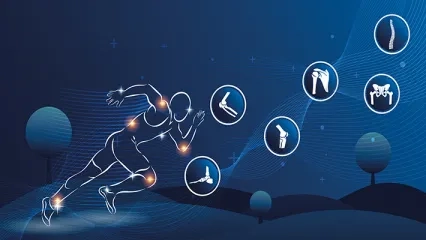Alo Yeditepe
Alo Yeditepe
Knee Arthritis
What is Knee Arthritis (Gonarthrosis)?
Knee cartilage is the tissue that provides movement by creating a flat surface in the knee joint. The self-healing property of the damage to the cartilage tissue is poor. The deterioration and weakening of the structure of the cartilage in the knee for various reasons are called arthritis (gonarthrosis).
What are the Symptoms of Knee Arthritis?
Especially in patients over 50 years of age, complaints such as pain in the knee, limitation of movement, deformity in the knees (O-shaped leg), noise from the knee during movement, and increased pain when going up and down the stairs can be seen.
Causes of Knee Arthritis
- Aging
- Rheumatoid disorders
- Infection
- Inflammatory diseases (lupus, gout, etc.)
- Hemophilia
Methods of Treatment in Knee Arthritis
The treatment methods vary according to the age of the patient, their expectation, the severity of their complaints, and the cause and degree of arthritis. If the age of the patient is young and the complaints of early-stage arthritis are not advanced, non-surgical treatment methods are recommended first. If the patient is overweight, it is recommended to lose weight. They are asked to stay away from heavy work and not to go up or down stairs or slopes. Exercise treatments are especially recommended to strengthen the thigh muscles. The use of painkillers (NSAIDs), ice treatment applications, and intra-knee medication applications (hyaluronic acid, PRP, stem cell) are also recommended methods.
How is Knee Arthritis Diagnosed?
In the physical examination of the patient, the diagnosis is made with the presence of sensitivity in the knee, narrowing due to the loss of cartilage in the knee joint space on the radiographs, deterioration in the joint surface, and osteophytes (bone spikes).
Methods of Surgical Treatment in Knee Arthritis
Arthroscopy
It is a method aimed at treating the knee joint without completely opening it, with the help of two small holes, by determining the pathology in the knee. When applied in the treatment of arthritis, it has been shown in literature studies that it provides a temporary improvement in the patient, after which complaints may recur.
High Tibial Osteotomy
It is a treatment method applied for arthritis that holds the inner face of the knee joint in patients under 65 years of age. This treatment aims to reduce the pressure on the inner part of the knee by taking the knee load plane to the outside a little, thereby slowing down the progression of arthritis. After the treatment, the patient becomes able to put a load on the knee after the bone union.
Unicondylar Knee Prosthesis
It is a treatment method applied especially in the wear of the cartilage holding the inner face of the knee joint. The goal of this treatment is to replace only the damaged cartilage on the inside of the knee joint with an implant to create a painless and mobile knee joint. After the surgery, the patient can start to move the next day and put a load on the knee.
This content was prepared by Yeditepe University Hospitals Medical Editorial Board.
”
See Also
- What are Hip Joint Diseases? Causes and Treatment
- Robotic Hip Replacement Surgery
- Knuckle Cracking Can Be Dangerous When It Becomes a Habit!
- Things to Consider When Walking in Snowy Weather
- What is Hallux Rigidus (Stiff Big Toe/Toe Arthritis)? Symptoms and Treatment
- What is Hallux Valgus (Bunion)? How is it Treated?
- What is a Bone Tumor? Bone Tumor Symptoms
- Meniscus and Cartilage Transplantation Can Be Done at the Same Time
- What is Crooked Leg? Can Crooked Legs Be Treated?
- What Causes Shoulder Dislocation? Shoulder Dislocation Treatment
- Knee Pain
- Wrist Pain Causes and Treatment
- Ergonomics in Automobiles Prevents Accidents
- Don't Underestimate Bone Pain That Doesn't Make You Sleep and Doesn't Relieve With Medication
- Joint Pain and Causes of Joint Pain
- Walking and Returning to Social Life After Knee Replacement Surgery
- What Are the Advantages of Robotic Knee Replacement Surgery?
- Robotic Knee Prosthesis Surgery
- Why Does Ankle Pain Occur? What Is the Treatment?
- What Causes Hip Pain? How Does Hip Pain Go Away?
- The Usage Area of Robotic Surgery Expands in Orthopedic Surgeries
- Higher Risk of Anterior Cruciate Ligament and Ankle Injury in Female Athletes
- Patients Who Undergo Joint Replacement Surgery Can Stand Up and Walk the Next Day
- Spinal Fractures
- Big Toes Can Be A Big Problem!
- What is Synovitis in Joints?
- Hip Osteoarthritis and Hip Prosthesis
- Hip Impingement Syndrome
- What is the Future of Treating Cartilage Problems?
- Not Only Athletes Suffer from Meniscus Tears!
- Is Cartilage Damage More Common in Those Who Run for Long Periods?
- Beware If Your Shoulder Or Neck Pain Lasts Longer Than Two Days After Swimming!
- Mistakes While Swimming Can Cause Shoulder Pain
- What is a Stress Fracture? How to Treat Stress Fracture?
- Myths About Fractures
- Vitamin D Deficiency May Be The Cause Of Your Joint Pain
- The First Onset of Pain in Cartilage Damage in the Knee Should Not Be Overlooked
- Have Your Baby Take Their First Steps in Good Health
- Heavy School Bags Can Cause Pain in the Lower Back, Shoulders, and Hands!
- Sports Injuries
- Cartilage Transplantation from Donor Has Been Started to Perform in Turkey
- Working From Home Increases Waist and Neck Problems
- He Walked Out Of The Hospital Where He Entered On Crutches
- First Cartilage Transplant from a Donor
- Pay Attention to the Pain That Occurs in the Front Part of Your Knees While Playing Sports!
- 8 Common Misconceptions About Sports Injuries
- Young Patient Who Could Not Walk Due to Cartilage Damage Recovered With Cartilage Transplantation
- Biopsy for Bone and Soft Tissue Tumors
- Knee Pain
- Crunching in the Kneecap May Be a Sign of Calcification
- Injured Athletes Can Return To Sports With Cartilage Transplant
- Treatment of Knee Arthrosis Varies According to the Person
- A Lack of Attention to Sports Injuries in Children May Affect Their Development
Alo Yeditepe







